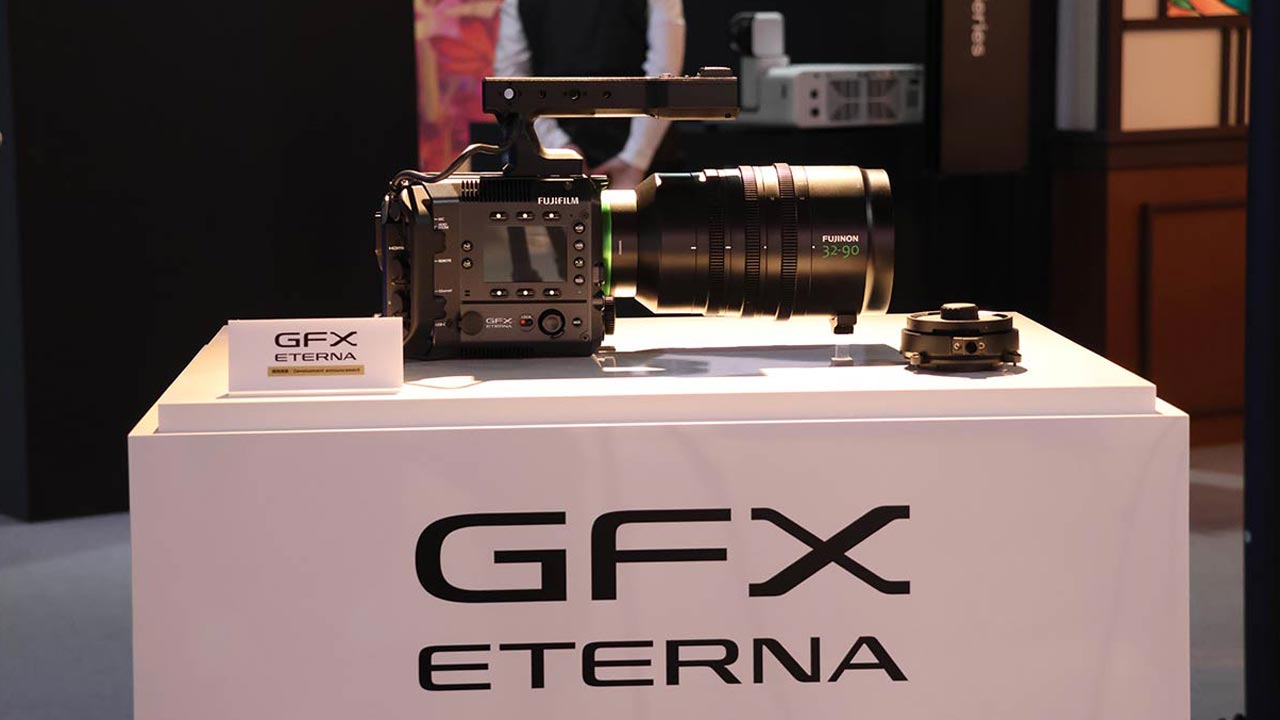Can the Fujifilm GFX Eterna 55 Bring Balance to the Large Format Cinema Market?
The allure of large format cinema is undeniable. Its ability to capture stunning detail, offer shallow depth of field, and deliver a truly immersive viewing experience has captivated filmmakers for decades. However, the high cost and complex workflows associated with traditional large format cameras have often kept it out of reach for many. Enter the Fujifilm GFX system, and now, the tantalizing prospect of the GFX Eterna 55 film simulation. Can this combination, specifically the Eterna 55, truly bring balance to the large format cinema market by offering a more accessible and affordable alternative? Let’s delve into the possibilities.
The Appeal of Large Format Cinema: Why Bigger is Better
Before exploring the potential impact of the GFX Eterna 55, it’s crucial to understand why large format cinema is so highly regarded. The benefits are numerous and impactful:
- Increased Resolution and Detail: Larger sensors capture significantly more detail, resulting in sharper, more vibrant images, especially when projected on large screens.
- Shallower Depth of Field: The ability to isolate subjects with a beautifully blurred background creates a cinematic aesthetic that is highly sought after. This helps draw the viewer’s attention and enhances storytelling.
- Enhanced Dynamic Range: Large format sensors typically offer a wider dynamic range, capturing more detail in both highlights and shadows, leading to a more nuanced and realistic image.
- Immersive Viewing Experience: The combination of all these factors culminates in a more immersive and engaging viewing experience for the audience.
These advantages have traditionally been reserved for high-budget productions due to the expense of film stock, processing, and specialized equipment.
The Fujifilm GFX System: Democratizing Large Format
The Fujifilm GFX system, with its medium format sensors, offers a more accessible entry point into the world of larger sensor filmmaking. While not technically “large format” in the traditional sense (65mm and beyond), the GFX system boasts sensors significantly larger than Super 35, the industry standard for many years.
- More Affordable Entry Point: GFX cameras are considerably more affordable than traditional large format film cameras.
- Digital Workflow Advantages: The digital nature of the GFX system eliminates the costs and complexities associated with film processing and scanning.
- Versatile Lens Options: The GFX system has a growing ecosystem of lenses, offering filmmakers a wide range of creative choices.
The Eterna 55 Film Simulation: A Cinematic Aesthetic in Camera
Fujifilm’s film simulations are a hallmark of their digital cameras, and the Eterna 55 simulation is specifically designed to emulate the look and feel of classic cinematic film stock.
- Soft Tones and Low Saturation: Eterna 55 delivers a subtle, muted color palette that is reminiscent of classic film stock, offering a refined and cinematic aesthetic.
- Smooth Gradations: The simulation provides smooth tonal gradations, preventing harsh transitions and creating a more pleasing image.
- Film-Like Grain (Optional): Fujifilm cameras allow users to add artificial grain to their images, further enhancing the film-like look.
Bringing Balance: The Potential Impact of GFX Eterna 55
The combination of the GFX system and the Eterna 55 film simulation has the potential to bring balance to the large format cinema market by:
- Lowering the Barrier to Entry: Offering a more affordable and accessible way for independent filmmakers and smaller production companies to achieve a large format look.
- Streamlining Workflows: Eliminating the complexities of film processing and scanning, allowing filmmakers to focus on creativity and storytelling.
- Expanding Creative Possibilities: Providing a versatile and powerful tool for filmmakers to experiment with different aesthetics and push the boundaries of visual storytelling.
- Bridging the Gap: While not a direct replacement for true large format, the GFX Eterna 55 offers a compelling alternative that captures many of the key advantages at a fraction of the cost.
The GFX system, with its Eterna 55 film simulation, is not a magic bullet that will completely revolutionize the large format cinema market. However, it represents a significant step towards democratization, offering filmmakers a more accessible and affordable way to achieve a stunning, cinematic look. By lowering the barrier to entry and streamlining workflows, the GFX Eterna 55 has the potential to empower a new generation of filmmakers and expand the creative possibilities of visual storytelling.
Frequently Asked Questions (FAQs)
1. Is the Fujifilm GFX system true “large format”?
No, the GFX system uses medium format sensors, which are smaller than traditional large format film sizes (e.g., 65mm, 70mm). However, they are significantly larger than Super 35, the industry standard for many years, offering a substantial increase in image quality and shallow depth of field potential.
2. Can the Eterna 55 film simulation perfectly replicate the look of classic film stock?
While Eterna 55 does a commendable job of emulating the characteristics of film stock, it is still a digital simulation. Factors such as lighting, lenses, and post-processing will also play a significant role in achieving the desired aesthetic.
3. What are the main advantages of using the GFX system with Eterna 55 for filmmaking?
The main advantages include: affordability compared to traditional large format, simplified digital workflow, versatile lens options, and the ability to achieve a cinematic look in-camera.
4. Is the GFX system suitable for professional filmmaking?
Yes, the GFX system is used by professional filmmakers on a variety of projects, from independent films to commercials and documentaries. Its high image quality, dynamic range, and versatile features make it a viable option for many productions.
5. What are some alternative film simulations available on Fujifilm GFX cameras?
Besides Eterna 55, Fujifilm offers a range of other film simulations, including Provia/Standard, Velvia/Vivid, Astia/Soft, Classic Chrome, and Eterna/Cinema. Each simulation offers a unique color palette and tonal characteristics, allowing filmmakers to tailor the look of their footage to suit their creative vision.




